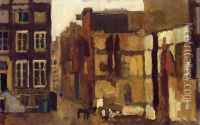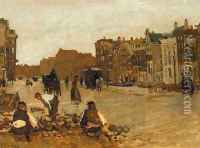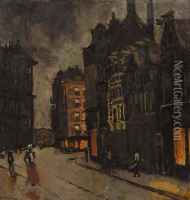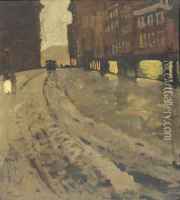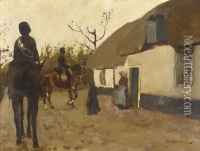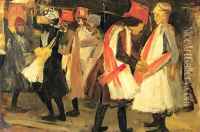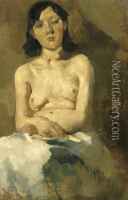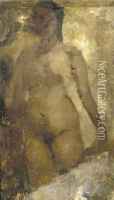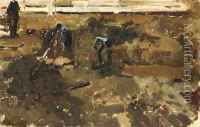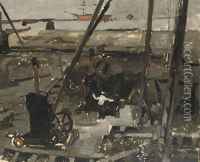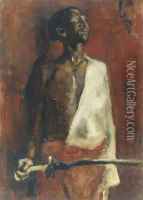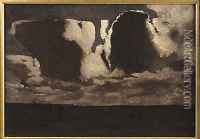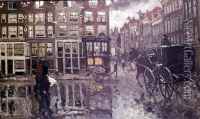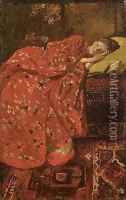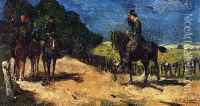George Hendrik Breitner Paintings
George Hendrik Breitner was a prominent Dutch painter and photographer, born on September 12, 1857, in Rotterdam, Netherlands. He is best known for his realistic depictions of urban life, capturing the essence of Amsterdam's streets and inhabitants at the turn of the 20th century. Breitner's work is often associated with the Amsterdam Impressionism movement, a variant of the broader Impressionist movement that focused on the effects of light and color in the urban environment.
Breitner's artistic journey began at the Royal Academy of Art in The Hague, where he studied from 1876 to 1880. During this period, he was influenced by the Hague School, particularly by the works of Jozef Israëls. His early work primarily consisted of military and equestrian subjects, showcasing his interest in capturing movement and the effects of light.
In the 1880s, Breitner moved to Amsterdam, where he found his true calling in depicting cityscapes and the daily lives of the working class. He roamed the streets with his camera, taking photographs that he would later use as studies for his paintings. This practice was relatively innovative at the time and demonstrates Breitner's embrace of new technology and his desire to document the reality of urban life.
Breitner's most famous series is perhaps the 'Girl in a Kimono', which features a series of paintings of a model, Geesje Kwak, dressed in Japanese attire. These works reflect the Japonism trend that was popular in Europe at the time and showcase Breitner's skill in capturing textures and the interplay of light and shadow.
Throughout his career, Breitner was both celebrated and criticized. His focus on everyday scenes and ordinary people was groundbreaking, yet some contemporaries accused him of preferring ugliness over beauty. Despite this, Breitner's work was influential in the development of modern Dutch art, and he played a significant role in the Amsterdam Impressionism movement.
George Hendrik Breitner passed away on June 5, 1923, in Amsterdam. Today, his works are held in high regard and can be found in major Dutch museums, including the Rijksmuseum and the Van Gogh Museum in Amsterdam. His legacy as a painter and photographer who captured the vibrancy and dynamism of city life at the turn of the century remains significant in the history of Dutch art.
